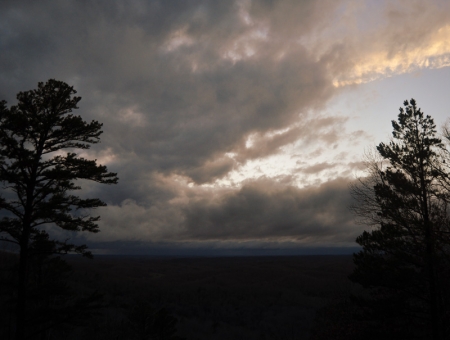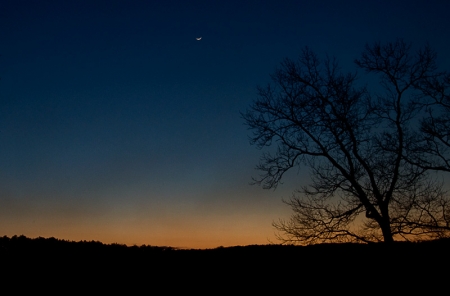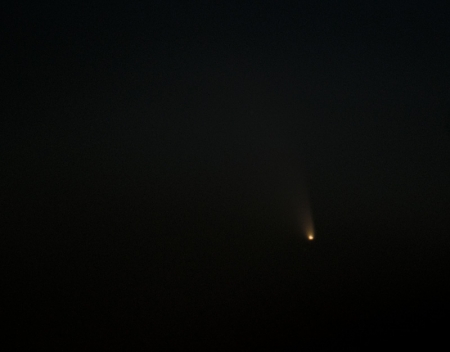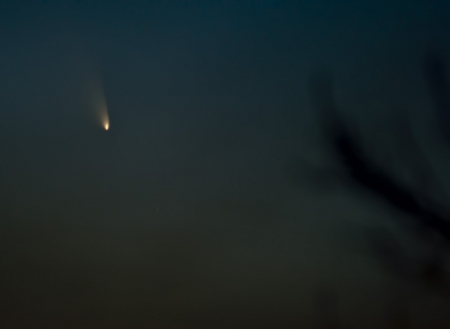Last weekend, the comet PanSTARRS became visible to those of us in the northern hemisphere for the first time. The comet would be low on the western horizon, visible shortly after sunset. It was expected to be a first magnitude object, about as bright as the stars in the Big Dipper, and visible to the naked eye. Unfortunately, our run of cloudy weather continued, making comet spotting problematic. This is what the view to the west looked like on the 10th.
The cloud cover became progressively lighter each evening, but still enough to put a damper on things. Tuesday, the 12th, was the biggest tease. This was the day that the moon, a thin crescent one day past the new moon, would be very close to PanSTARRS and making for an excellent photo-op. But after a mostly sunny day, the clouds rolled in late in the afternoon, blotting out the sky and making a search for the comet remain pointless.
Wednesday finally broke the streak and we had a nice, sunny day. I was paranoid, expecting clouds at any moment, but only a few small, scattered ones materialized. So sunset found me at the house of friends in Dry Valley, with a nice view of the western horizon. There were a few clouds, but they were to the south and not of any concern. The biggest problem was from an unexpected source: smoke from wildfires. Arsonists had set the woods on fire in several locations in northwest Carter County and eastern Shannon County and the cloud of smoke was spreading in front of us, forming a haze in the west. You should be able to see the smoke in this photo.
The sun dropped below the trees on the far hill and we began to search in earnest. The moon was now two days past new, still only a sliver, but easy to find. There were also about a hundred airplanes and a few flocks of geese, but no comet. The evening darkened and we kept looking. Soon Jupiter was visible, followed closely by Sirius and then Betelgeuse and Rigel, defining opposite corners of Orion. Still no comet, but we kept scanning the sky with binoculars. The three stars of Orion’s belt faded into view, yet PanSTARRS did not appear. Clearly, this thing wasn’t going to be as bright as promised. Or maybe it was just the smoke masking its presence, since Jupiter and the visible stars were high enough in the sky to be beyond its influence.
Finally, finally, scanning farther north than I thought I should, I found it. It appeared very red-orange and undoubtedly dimmer thanks to the smoke. I couldn’t see it without binoculars, even when I remembered the very important step of putting on my glasses. Using the tree on the right as a reference, I quickly located it with the 500mm lens on the camera and began to shoot.
I believe both of these photos were 5 second exposures — the difference in appearance is in how I processed them in Adobe RAW.
I have vivid memories of watching Hale-Bopp back in ‘97, so PanSTARRS was a little underwhelming. But fear not. We only have to wait until November for our next chance to comet-gaze, for that’s when ISON will come blazing into the inner solar system. NASA calls ISON a potential “comet of the century” and says it could be as bright as a mid-day full moon. Predicting the brightness of a comet is, well, a shot in the dark — whether or not ISON pans out, I can’t wait for the chance to see it.



